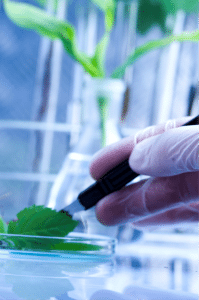Research Studies

Stevia has been the subject of hundreds of studies conducted over several decades in countries around the world. This research supports the health benefits and safety of high purity stevia extracts for use by the whole family. Traditionally, the stevia plant leaves were dried and used to sweeten beverages or medicines, or simply chewed as a sweet treat. In 1899, the stevia plant was first scientifically recorded by Moises Santiago de Bertoni in Paraguay. In 1905, it was defined as Stevia Rebaudiana, a member of the sunflower (Compositae) family. Stevia was first commercially adopted by Japan in the 1970s, and its popularity continues to grow around the world.
Stevia leaves contain natural sweet compounds called steviol glycosides. High purity stevia extract, the ingredient approved for food and beverage use in most countries, contains 95% or more steviol glycosides. A majority of the recent research on stevia uses high purity stevia extracts. More than 200 expert studies have attested to the safety of stevia.

